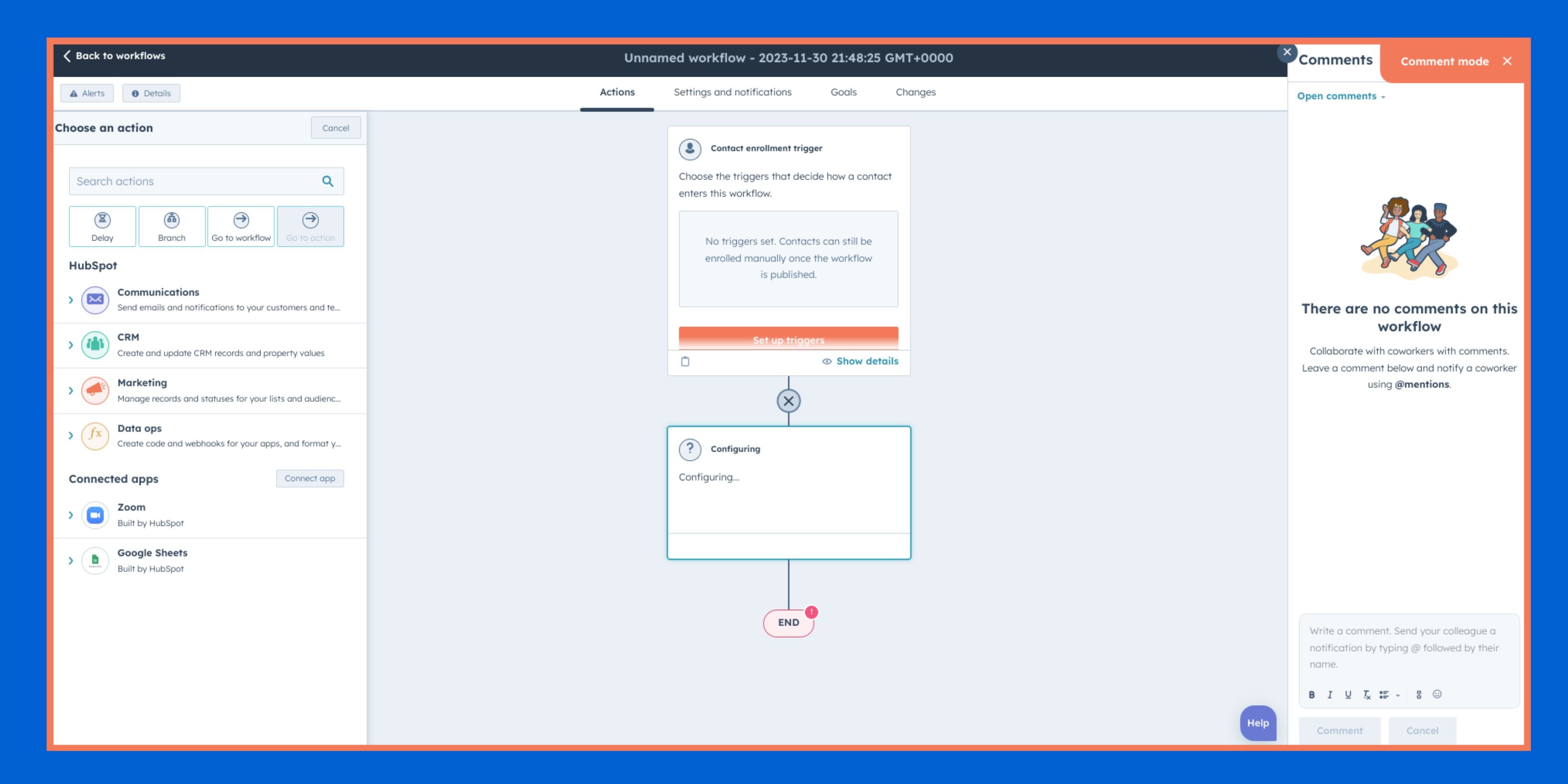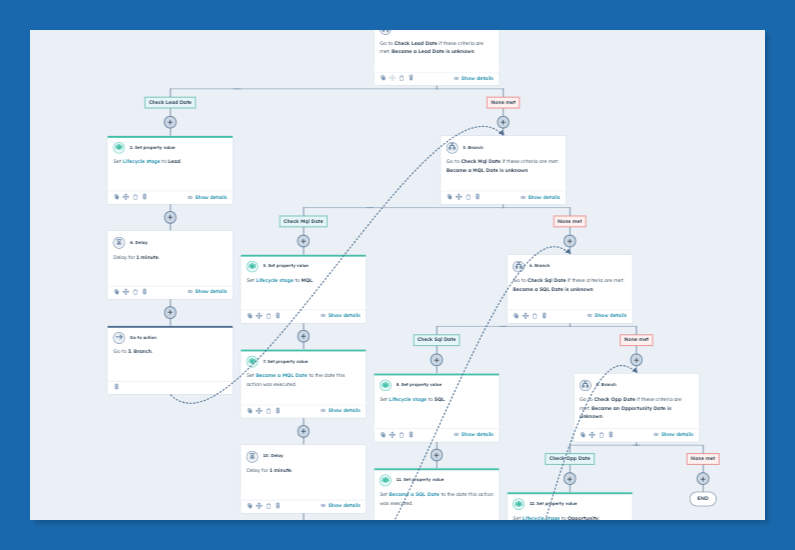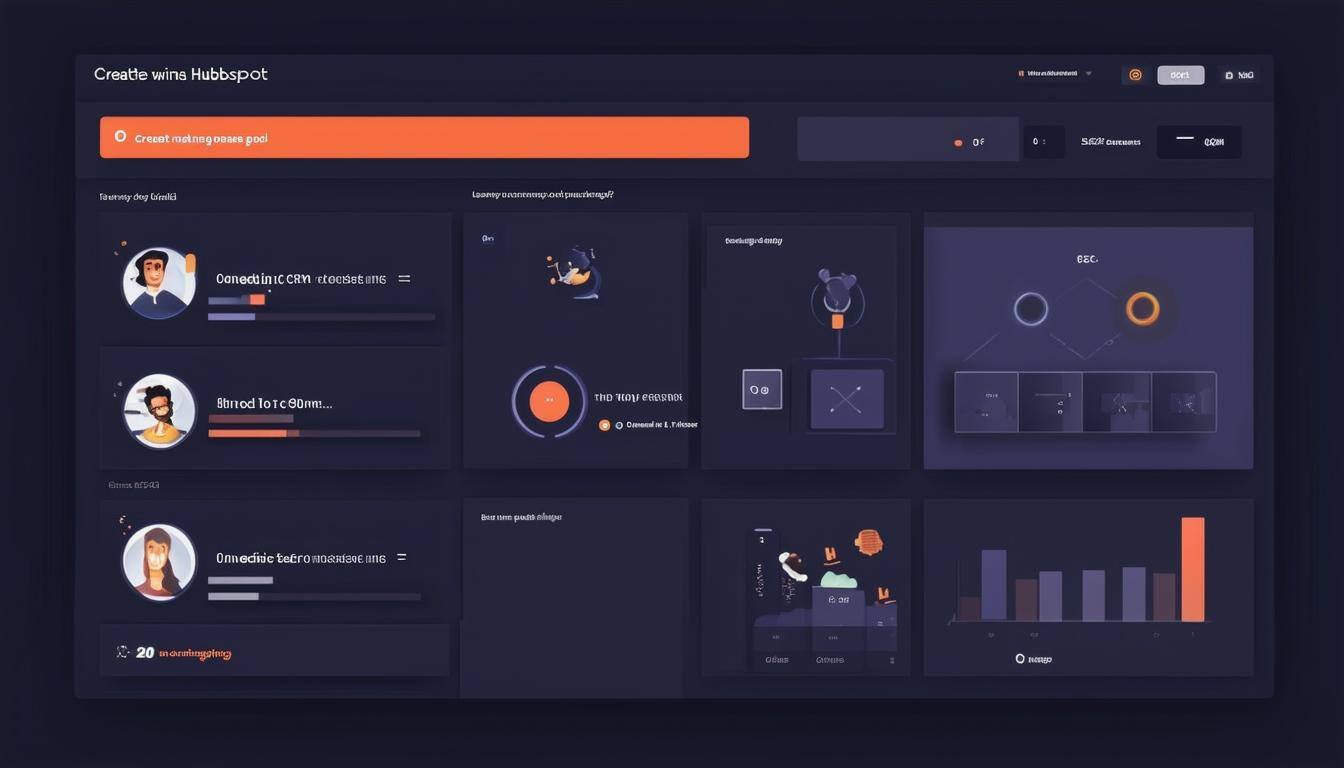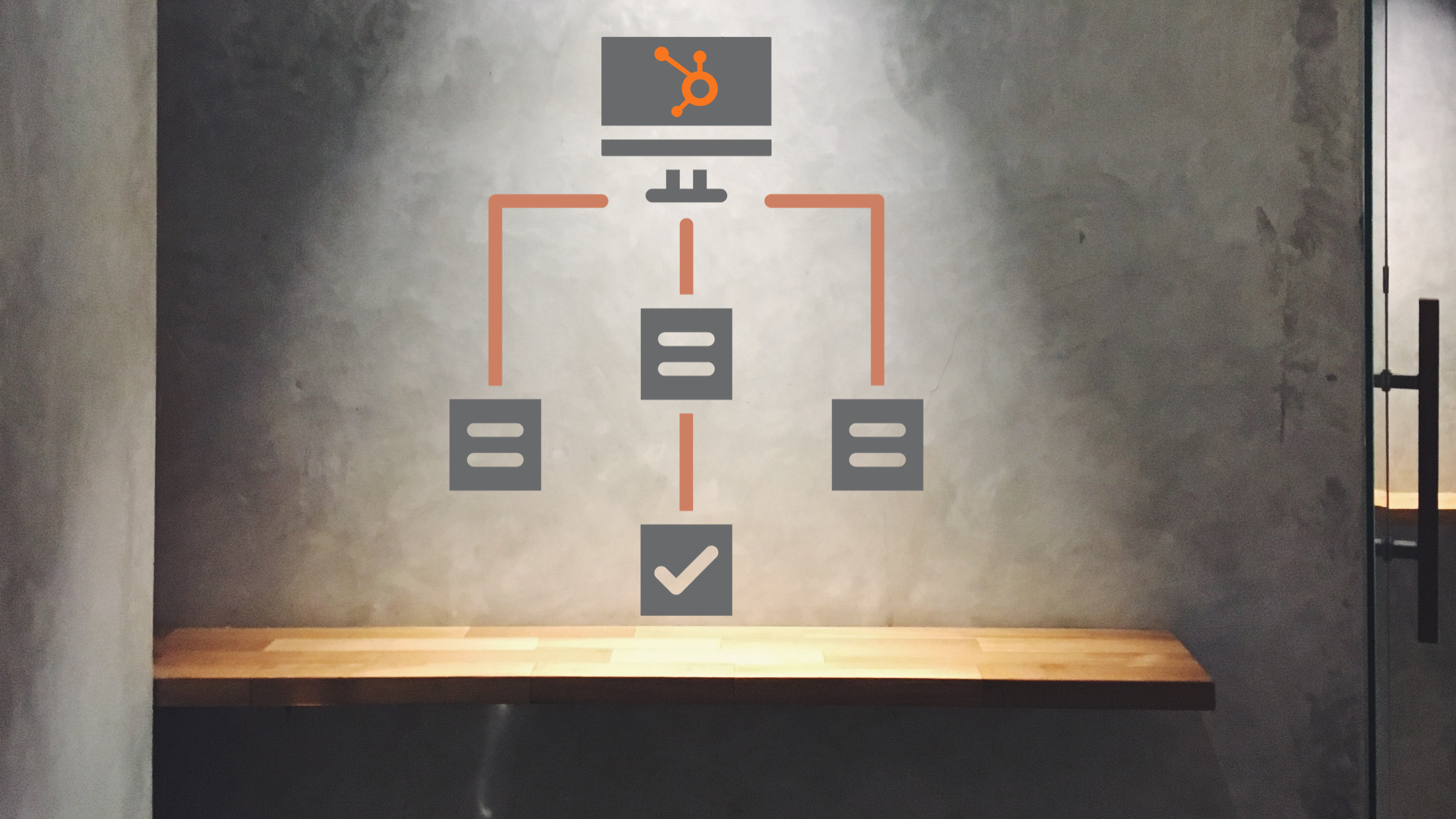Power of Automation: How to get started with HubSpot Workflow for Aussie Marketers
In the fast-paced and competitive world of marketing, Australian businesses are constantly seeking efficient methods to simplify procedures, enhance productivity, and secure better results. This is precisely where the power of HubSpot Workflow is realised. This robust automation tool, as part of the HubSpot platform, serves as a transformative solution for Australian marketers. It empowers them with the ability to automate mundane tasks, cultivate leads more efficiently, and refine their marketing strategies. So, let's dive into how to get started with HubSpot Workflow, a game-changer for Aussie marketers.
HubSpot Workflow is a treasure trove of features that allows marketers to automate a broad spectrum of marketing tasks and HubSpot integrations. From dispatching personalised emails to delegating tasks to sales teams, this tool doesn't just save precious time, but also ensures that marketing efforts are carried out consistently and with high efficacy.

Expanded Benefits of HubSpot Workflow for Aussie Marketers
- Enhanced Efficiency: In today's fast-paced and competitive marketing landscape, efficiency is the name of the game. With HubSpot Workflow, you can say goodbye to time-consuming and repetitive tasks that eat into your valuable work day. By automating processes such as email sends, data entry, and task assignment, you free up significant time that can be better utilised for strategic marketing initiatives. This not only increases your productivity but also allows you to focus on the bigger picture - growing and scaling your business.
- Improved Lead Nurturing: At the heart of every successful marketing strategy is effective lead nurturing. HubSpot Workflow empowers you to develop personalised nurture campaigns that engage leads at every stage of the sales funnel. Whether it's sending tailored emails based on a lead's behaviour, or delivering targeted content that addresses their specific pain points, HubSpot Workflow makes it easier to guide leads smoothly through the sales process. This personalised approach not only enhances the lead's experience but also increases the likelihood of conversion.
- Increased Sales and Growth: The ultimate goal of any marketing campaign is to drive sales and stimulate business growth. HubSpot Workflow is a powerful tool that helps you achieve this objective. By enabling you to optimise your marketing campaigns and zero in on the right audience, HubSpot Workflow helps propel conversions and augment revenue. Whether it's segmenting your audience for more targeted messaging, scoring leads to identify high-value prospects, or tracking campaign performance to identify areas for improvement, HubSpot Workflow puts you in the driver's seat.
- Streamlined Workflows: Managing multiple marketing campaigns can be a complex and challenging task. But with HubSpot Workflow, this process becomes a breeze. The tool allows you to manage and visualise your workflows with ease, ensuring seamless execution and top-notch performance. You can easily track the status of various tasks, identify bottlenecks in your processes, and make necessary adjustments to ensure smooth operation. This not only improves your productivity but also ensures that your marketing efforts deliver the desired results.
We offer essential HubSpot workflows that every business should implement to preserve time for strategic tasks and concentrate on business growth.
Common HubSpot Workflow Examples
Let's explore some of the most common types of workflows and how they can streamline your marketing and sales processes:
- Contact-based workflows: These workflows trigger tasks based on contact activities like form submissions or email opens. Imagine welcoming new contacts with an automated email or nurturing leads with a series of personalised emails.
- Company-based workflows: These kick in based on company activities like the creation of a new company or changes to company properties. You could, for instance, send a custom email to a decision-maker once the company hits a major revenue milestone.
- Deal-based workflows: These workflows automate tasks based on deal activities, such as the creation of a new deal or changes to deal properties. Take moving deals through the sales pipeline automatically, for instance, and alerting the sales team when a deal risks not closing.
- Ticket-based workflows: These workflows automate tasks based on ticket activities like a new ticket's creation or changes to a ticket's status. They can be set up to send an automated response to new tickets or escalate high-priority tickets to the right team.
- Custom object-based workflows: These workflows automate tasks based on custom object activities like the creation of a new custom object or changes to custom object properties. For example, it could trigger a notification to the appropriate team when a new support case is created, or automatically close cases not updated within a certain timeframe.
- Quote-based workflows: These workflows initiate tasks based on quote activities, such as the creation of a new quote or changes in quote properties. For instance, they can trigger a follow-up email when a quote is sent to a potential client, or notify the sales team when a quote is accepted.
- Conversation-based workflows: These workflows automate tasks based on conversation activities, like a new conversation started or a conversation marked as closed. They could, for example, automatically route a conversation to the relevant team member based on the customer's query, or send a follow-up email after a conversation is closed.
- Feedback submission-based workflows: These workflows are triggered by feedback activities such as a new feedback submission or changes in feedback properties. They can automatically route negative feedback to the customer service team for immediate action, or send a thank you email for positive feedback.
- Goal-based workflows: These workflows are activated by goal activities, like the achievement of a specific goal or changes in goal properties. They might automatically send a congratulatory email when a goal is reached, or update a contact's lifecycle stage when a sales goal is achieved.
- Invoice-based workflows: These workflows start tasks based on invoice activities, such as the creation of a new invoice or changes in invoice properties. They could, for example, automatically send a reminder email when an invoice is due, or notify the finance team when an invoice is paid.
- New lead-based workflows: These workflows are triggered by new lead activities, like when a new lead is captured or there are changes in lead properties. They could initiate a series of welcome emails to warm up the lead, or alert the sales team to follow up with the lead.
To learn more, check out these essential HubSpot workflows for a step-by-step guide.
We've shared some essential HubSpot workflows here that every business should implement. By putting these workflows to work, you'll be able to save time for more strategic tasks and focus on growing your business.
Preparing to Create a Workflow
Before jumping right into the creation of a workflow, it's essential to build a strong foundation for your automation journey. Here are some friendly tips that will help you successfully plan:
1. Pin Down Your Goals and Objectives:
Start by clearly stating what you hope to accomplish with your workflow. Are you aiming to streamline lead nurturing, amplify customer support, or turbocharge sales conversions? Having clear targets will steer your workflow design and decision-making process.
2. Spot Your Workflow Triggers:
Identify the events that will kick-start your workflow. These triggers could be website visits, form submissions, email opens, or alterations to contact or deal properties. Take a moment to carefully consider which events best align with your objectives.
3. Lay Out Your HubSpot Workflow Actions:
Picture the sequence of steps that will unfold within your workflow. What actions should be initiated in response to the identified triggers? These actions could include sending emails, updating properties, creating tasks, or alerting team members.
4. Pinpoint Your Target Audience:
Accurately determine the group of contacts or deals that your workflow will impact. This will guarantee that your automation efforts are targeted and in sync with your marketing strategies.
5. Assess Your Resources and Capabilities:
Take stock of your team's available resources and technical abilities to gauge the feasibility of your workflow. Make sure you possess the necessary skills, tools, and integrations to carry out your automation plans effectively.
6. Formulate a Testing and Monitoring Strategy:
Devise a plan to thoroughly test your workflow before launching it. This will help detect and fix any potential issues before they affect your marketing efforts. Moreover, plan to monitor your workflow's performance and tweak it as necessary.
Now that you've got a solid grasp of what HubSpot Workflow is and how it can transform your marketing strategy, it's time to take a deeper dive. In the next section, we'll guide you step-by-step through the process of creating a lead nurturing workflow. This practical knowledge will empower you to efficiently guide your leads through the sales funnel and boost your conversion rates.
Crafting Your Own HubSpot Workflow

Creating a workflow in HubSpot is a breeze, and we're here to guide you every step of the way:
- Choose your workflow type. With an array of workflow types available, you'll want to select the one that best suits your needs. Perhaps you'd like to nurture leads, automate your email sends, or update contact records.
- Establish your workflow triggers. These are the events that will set your workflow into motion. For instance, you might choose to trigger your workflow when a contact fills out a form, opens an email, or visits your website.
- Add actions to your workflow. These are the steps your workflow will take. You could include actions like sending an email, updating a contact record, or creating a task.
- Test your workflow. Before launching your workflow, it's crucial to test it to ensure it functions as intended. HubSpot's workflow testing tool makes this process simple.
- Activate your workflow. Once you're happy with your workflow, you can activate it. This will set your workflow in motion.
Now, let's dive into the detailed steps for creating a lead nurturing workflow. This example is for when someone completes a download guide, triggering a HubSpot contact-based workflow to initiate an automated email follow-up based on form submissions:
Prerequisite:
- Make sure you have a HubSpot account and that you've created the necessary forms and automated emails for this workflow.
Steps:
- Head to Workflows:
- Log into your HubSpot account and head over to the "Automation" section.
- Click on "Workflows" from the sidebar menu.
- Create a New Workflow:
- Click the "+ Create workflow" button in the upper-right corner.
- Select "Contact-based" as the workflow type.
- Give your workflow a descriptive name, such as "Download Free Guide Email Series."
- Establish Enrollment Triggers:
- Click the "Select enrollment criteria" button.
- Choose "Form submitted" as the trigger type.
- Pick the relevant "Download Free Guide" form from the list of available forms.
- Build the Email Follow Up:
- Drag and drop the "Send email" action from the list of available actions onto your workflow canvas.
- Choose the first automated email you created for this follow up from the email template options.
- Set the delay for the email action to "5 days" to send the email five days after the form submission.
- Repeat the process of adding "Send email" actions for the remaining two automated emails, selecting the respective email templates and setting the delays to "10 days" and "15 days" for the second and third emails, respectively.
- Review and Activate the Workflow:
- Thoroughly review the workflow to ensure the email sequence is configured correctly and the delays are set appropriately.
- Once you're satisfied, click the "Activate" button to enable the workflow and kick off the automated email sequence for new contacts who submit the "Download Free Guide" form.
- Keep an Eye on Workflow Performance:
- Monitor the performance of your workflow regularly by tracking metrics such as email open rates, click-through rates, and unsubscribe rates.
- Analyze the data and pinpoint areas for improvement or optimization of the email sequence.
Here are some additional tips for creating workflows in HubSpot:
- Develop a Naming Convention: Establishing a consistent and descriptive naming convention for your workflows can greatly enhance your ability to identify and manage them effectively. This will ensure that you and your team can easily recognise the purpose of each workflow at a glance.
- Create Informative Descriptions: It's important to provide comprehensive descriptions for each workflow that outline their specific functions. This not only aids you in understanding what each workflow is set up to do, but also helps other team members who might be working with these workflows.
- Utilise the Workflow Testing Tool: HubSpot provides a useful workflow testing tool. It's crucial to take advantage of this feature to ensure that your workflows are operating correctly and producing the results you expect. This proactive step can prevent any unforeseen issues that could arise.
- Set Goals to Track Success: Defining clear goals for each of your workflows is a key factor in measuring their success. By setting targets, you can easily assess whether your workflows are helping you achieve your intended objectives.
- Leverage Branches for Conditional Workflows: HubSpot's workflow tool allows you to create branches, providing conditional paths that the workflow can follow based on your set criteria. This means you can customise your workflows to react differently to varying situations, making your marketing efforts even more effective.
- Incorporate Delays for Spacing Out Workflow Steps: Implementing delays between different steps in your workflows can be very beneficial. It allows you to space out the actions your workflows take, ensuring a more natural and less robotic interaction with your leads and customers.

Workflow FAQ for Aussie Marketers
-
What are some marketing tasks that I can automate with HubSpot Workflow?
HubSpot Workflow can automate a variety of tasks! This includes sending personalised emails, assigning tasks to your sales team, updating contact properties, and enrolling contacts in lists.
-
Can HubSpot Workflow assist me in nurturing leads more effectively?
Absolutely! HubSpot Workflow enables you to craft personalised nurture campaigns tailored to specific contact behaviours. This ensures your leads receive content that's relevant and timely.
-
Can I use HubSpot Workflow to automate tasks across multiple marketing channels?
Yes, you certainly can! HubSpot Workflow integrates smoothly with other HubSpot tools, allowing you to automate tasks across email marketing, social media, and website content.
-
How much time can I save by automating my marketing tasks?
The time you save can vary based on the specific tasks you automate. However, Zapier Data suggests that marketers using automation save an average of 25 hours per week. Automation can cover various tasks, including team communication, customer identification and targeting, email scheduling, tailored messaging, subscriber database management, and event notifications.
-
What challenges might I face when using HubSpot Workflow?
The biggest challenge can be learning how to use the tool effectively. But not to worry! HubSpot provides a wealth of resources to help you get started, including online tutorials, webinars, and documentation.
-
Is HubSpot Workflow a good fit for my business?
HubSpot Workflow is a versatile tool that can benefit businesses of all sizes. However, it's crucial to assess your specific needs and objectives before deciding if the tool is the right fit for you.
-
What's the cost for HubSpot Workflow?
HubSpot Workflow is included in all HubSpot professional and enterprise subscription plans. The price of a HubSpot plan depends on the features and functionality you require.
-
Where can I find more information about HubSpot Workflow?
For more information, you can visit the HubSpot website or attend a HubSpot webinar.
-
Can you provide some examples of how Australian businesses are using HubSpot Workflow?
Sure, here are a few examples:
- A B2B SaaS company uses HubSpot Workflow to automate its lead nurturing process, sending personalised emails to leads based on their engagement with the company's website and marketing materials.
- A retail company uses HubSpot Workflow to automate its email marketing campaigns, sending targeted emails to customers based on their purchase history and interests.
- A service-based company uses HubSpot Workflow to automate its customer onboarding process, sending welcome emails to new customers and providing them with helpful resources.
To sum up, HubSpot Workflow is a powerful tool that can significantly enhance your marketing strategy. It enables you to automate a wide array of tasks, streamline your marketing processes, and ultimately drive sales and growth. Whether you're nurturing leads, managing workflows, or assessing your marketing performance, HubSpot Workflow has got you covered.

Remember, success with HubSpot Workflow comes from a clear understanding of your objectives, identifying the right triggers and actions, and continuously testing and monitoring your workflows. It's all about creating the right workflows that align with your marketing strategies and business goals.
If you're considering implementing HubSpot Workflow, but need some guidance, we're here to help. Whether it's training your team on how to use HubSpot Workflow effectively or creating and managing your workflow automation, our team can assist you. We'll work with you to understand your needs and ensure that you're getting the most out of HubSpot Workflow.
Please don't hesitate to contact us for an assessment of your needs. We're excited to help you harness the power of automation and take your marketing to the next level.





